The newest registered user is гераскинс
Our users have posted a total of 48009 messages in 7050 subjects

WORLD CLOCK
NAT GEO * 2024 may bring the best auroras in 20 years *
Valley of the Sun Casual Club :: WORDS , FACTS , DATES , GAMES & TRIVIA & HISTORY :: NATIONAL GEOGRAPHIC
 NAT GEO * 2024 may bring the best auroras in 20 years *
NAT GEO * 2024 may bring the best auroras in 20 years *
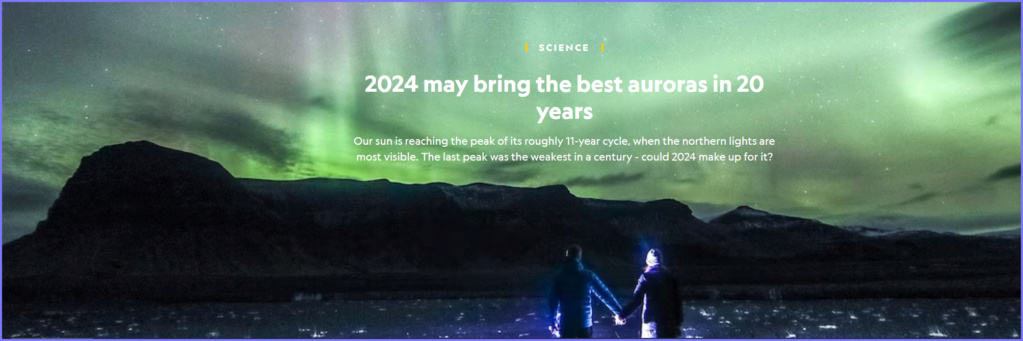
PUBLISHED DECEMBER 1, 2023
• 7 MIN READ
Three decades had passed since Texas photographer Wesley Luginbyhl saw the northern lights in his home state. Then, in spring this year, he photographed them twice.
A particularly intense solar storm—eruptions that propel electrically charged particles at high speeds away from the sun—caused aurora borealis to be seen at latitudes much farther south than usual, with sightings in Virginia, Arizona, and southern Spain.
Luginbyhl says he never expected to pick up more than a faint red glow on the horizon in photos during April’s event, but as he drove north from Amarillo to Texahoma, “the entire northern horizon had a glow to it.” He captured incredibly bright colors–blue, pink, red and green–of the aurora, which he said was practically overhead.
In 2024, experts say we may see even more auroras in regions they’re not normally spotted. That’s because the sun is reaching the peak (called the “solar maximum”) of its roughly 11-year cycle, in which solar activity will be greatest. But this maximum has even more excitement around it than usual because the last one in 2014 was the weakest in a century, says Mark Miesch, a research scientist at NOAA’s Space Weather Prediction Center in Boulder, Colorado.
Does that mean 2024 will see the best auroras in 20 years? Here’s what you need to know.
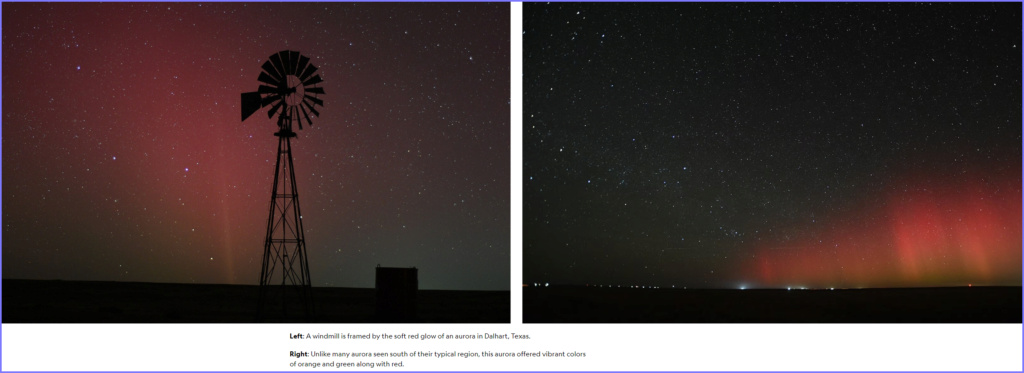
How to see the northern lights during the solar maximum
The northern lights appear in a region around the earth’s magnetic pole, called the “auroral oval” or “auroral zone”, explains Don Hampton, research associate professor at the Geophysical Institute of the University of Alaska Fairbanks. But that region shifts and fluctuates all the time, depending on the strength of solar wind, a stream of charged particles from the sun’s atmosphere that can be strengthened by storms. During the solar maximum, experts expect that episodes when the auroral zone grows and is more active will happen more frequently.
“When there’s more energy, [the auroral zone] gets thicker and expands further south,” says Hampton. “I don’t think it is too wild a prediction to say that people in the midwest and maybe even lower midwest (40th parallel) will have a good chance to see aurora once or twice during this solar cycle, but there are no guarantees,” he says. In the U.S., the 40th parallel runs through Provo, Utah; Boulder, Colorado; north Indianapolis; and Columbus, Ohio.
Aurora forecasting apps like NOAA’s Space Weather Prediction Center, Aurora Alerts, and My Aurora Forecast & Alerts can help chasers predict when it will be best to see the northern lights as well as how far south the auroral oval will extend after solar activity. On average, auroras are more frequent around the March and October equinoxes, says Magnus Wik, a space weather scientist at the Swedish Institute of Space Physics.
There’s more to consider when it comes to timing and location—cloudy or light-polluted skies will make aurora spotting difficult or impossible.
To escape manmade light pollution, consider searching DarkSky.org for certified international dark sky places around the world.
The direction you look matters, too, depending on your location related to the auroral oval. “In Alaska, if we get a big solar storm, we look overhead or south,” Hampton said. “In the Midwest, find a field and look north and see what you can see.”
Not all aurora viewing is created equal, cautions Miesch.
“On the rare occasions when you can see it well in the contiguous U.S., it is usually a faint red glow on the horizon—nowhere near as dramatic as in pictures and movies,” he says.
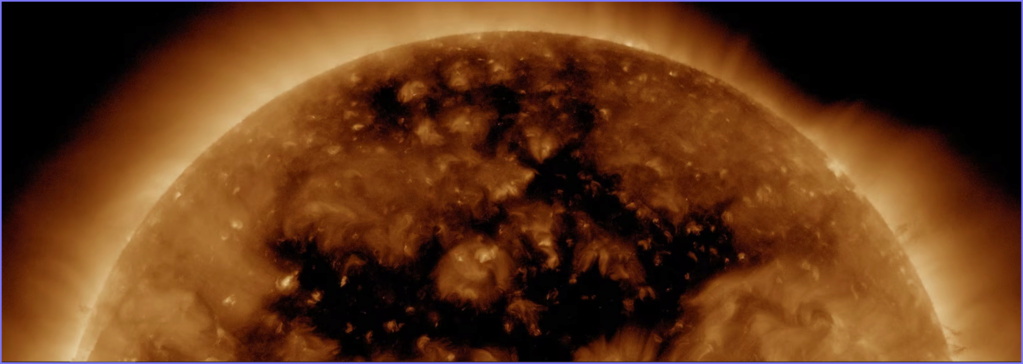
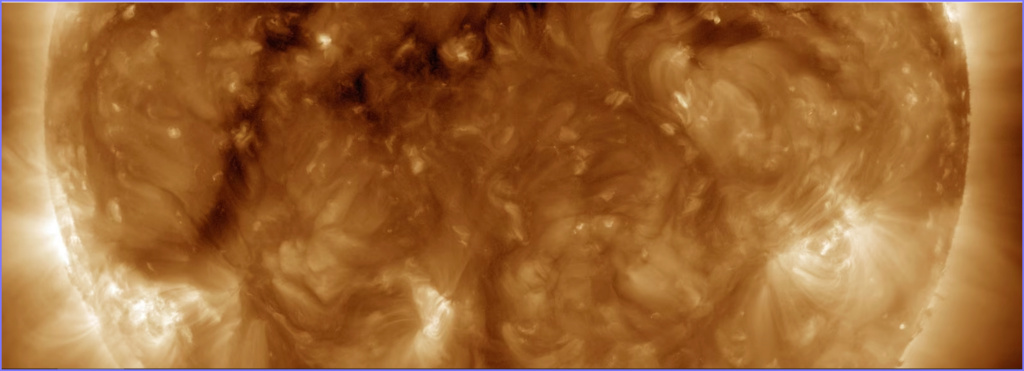

The dark area across the top of the sun in this image taken in October 2015 is a coronal hole, a region where the magnetic field is open to space. A high-speed solar wind stream that originated from this coronal hole resulted in several nights of auroras on Earth.
PHOTOGRAPH BY NASA, EYEVINE/REDUX
Solar activity and the solar maximum
The sun’s current cycle, Solar Cycle 25, started in December 2019. Activity on our closest star is expected to peak earlier and stronger than NOAA previously predicted at the start of the cycle.Solar flares, coronal mass ejections and sunspots are just some of the solar events that are expected to increase in frequency and strength in 2024, says Wik.
Sunspots are darker, cooler areas on the sun’s surface where magnetic force is significantly higher than elsewhere on the sun. Hampton says this cycle has already seen more sunspots than the past few solar cycles. Both solar flares and coronal mass ejections (CMEs) often happen near these areas and both expel energy into space.
“Solar maximum means more storms, and during storms northern lights occur more often, are more intense, last longer and can extend to lower latitudes than usual,” says Slava Merkin, space physicist and director of the Center for Geospace Storms at the Johns Hopkins Applied Physics Laboratory.
Auroras are caused by the interaction of the solar wind (a stream of hot magnetized gas called plasma) with the magnetosphere (the region of space around Earth in which our planet’s magnetic field is dominant), Miesch says. There are two kinds of plasma emissions from the Sun that cause auroras: CMEs and high speed solar wind streams that can also cause weaker geomagnetic storms.
How do solar storms affect the Earth?
While many solar storms send gusts of solar wind in other directions, those that hit the Earth can compress and distort our magnetosphere, the protective magnetic bubble surrounding the planet, says Miesch.Conditions in our outer atmosphere, including the magnetosphere, impact technology on Earth in many ways, says NOAA's Space Weather Prediction Center Program coordinator, Bill Murtagh, including disrupting GPS functions and interfering with satellites in low orbit.
With current solar activity levels higher than in the past 20 years and increasing into 2024, it means more storms to learn from, says Miesch.
“The more we observe these phenomena the better we understand them and the better we understand them the better we can predict them.”
 Similar topics
Similar topics» Li-Fi-like System Would Bring 100-Gbps Speeds Straight to Your Computer
» ASSORTED EPIC MUSICAL PERFORMANCES , COLLABORATIONS , ETC
» HEADLINES AT 10 YEARS OLD
» THE INSTIGATORS
Valley of the Sun Casual Club :: WORDS , FACTS , DATES , GAMES & TRIVIA & HISTORY :: NATIONAL GEOGRAPHIC

 Events
Events






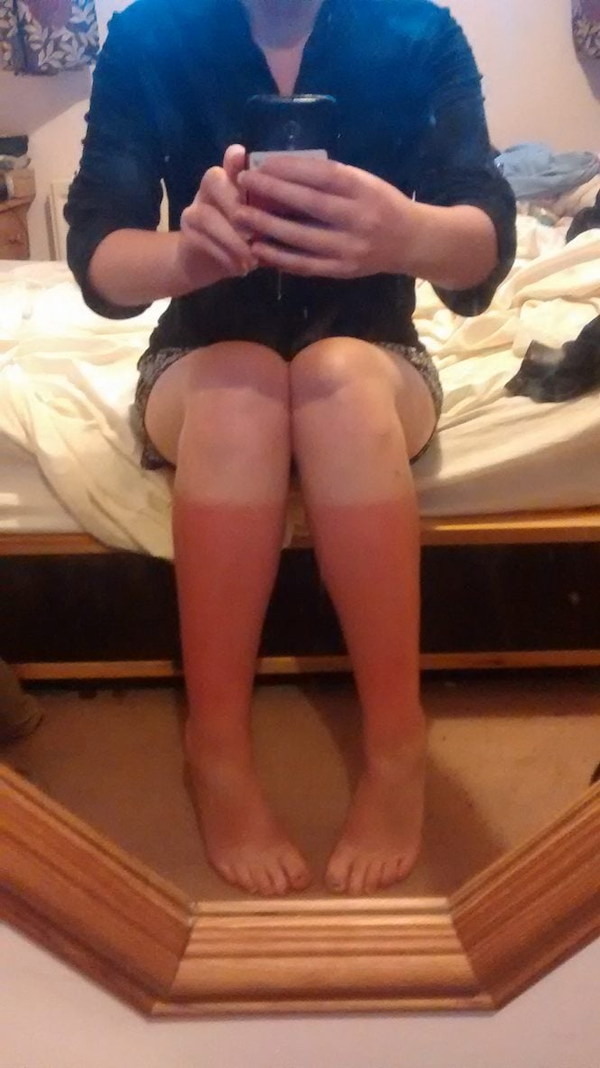

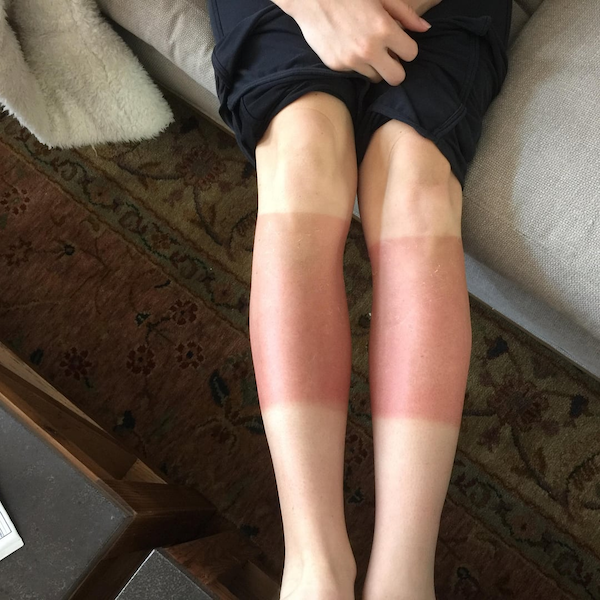


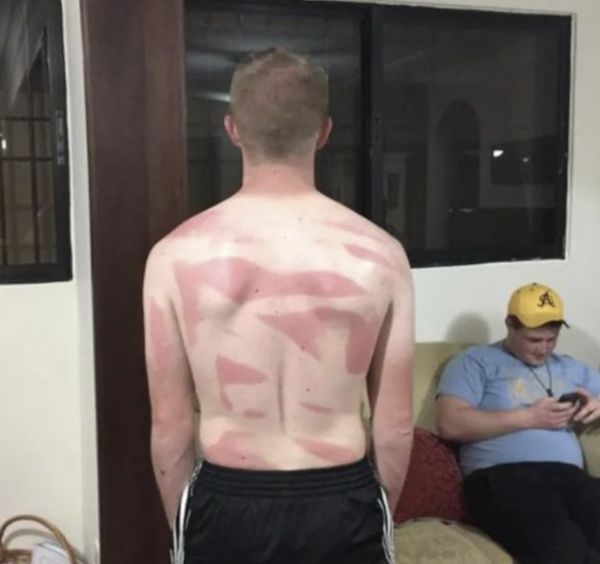
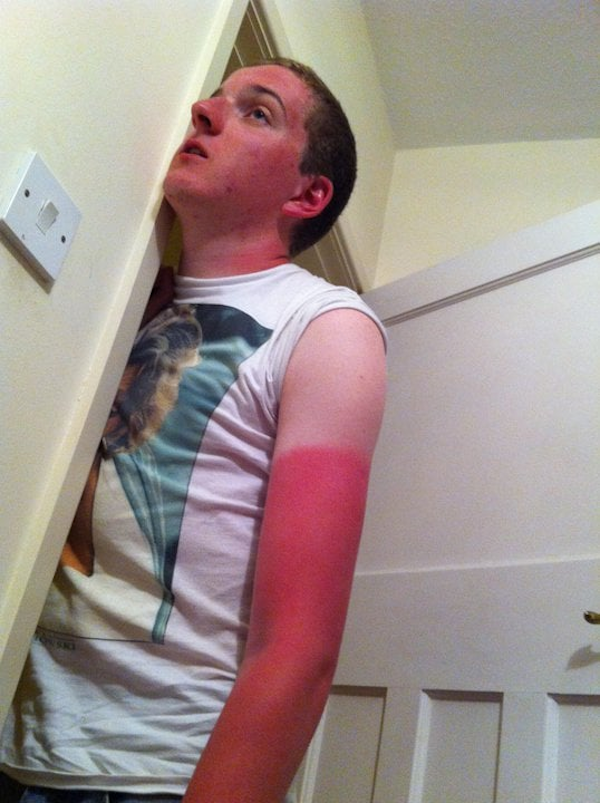


































































» INTRO TO WORD SMARTS
» PINTEREST ICONIC COMIX
» HISTORY FACTS * Gold wasn't always the top Olympic medal *
» Word Genius Word of the day * occlude *
» JULY NATIONAL CELEBRATION DAYS JULY 26 2024
» QUIZ TREAT QUIZ *Which mammal has the most powerful bite? *
» QUIZ TREAT ANSWER PAGE
» NAT GEO * The 2024 Olympics will likely be the hottest ever *
» NAT GEO * Sharks found with cocaine in their systems *
» WISE TRIVIA QUIZ *What was the first song ever played on the radio? *
» WISE TRIVIA ANSWER PAGE
» E.S.Etaski * Sister Seekers Book 10 now available everywhere! *
» WORD DAILY Word of the Day: * literatim *
» JULY NATIONAL CELEBRATION DAYS JULY 25 2024